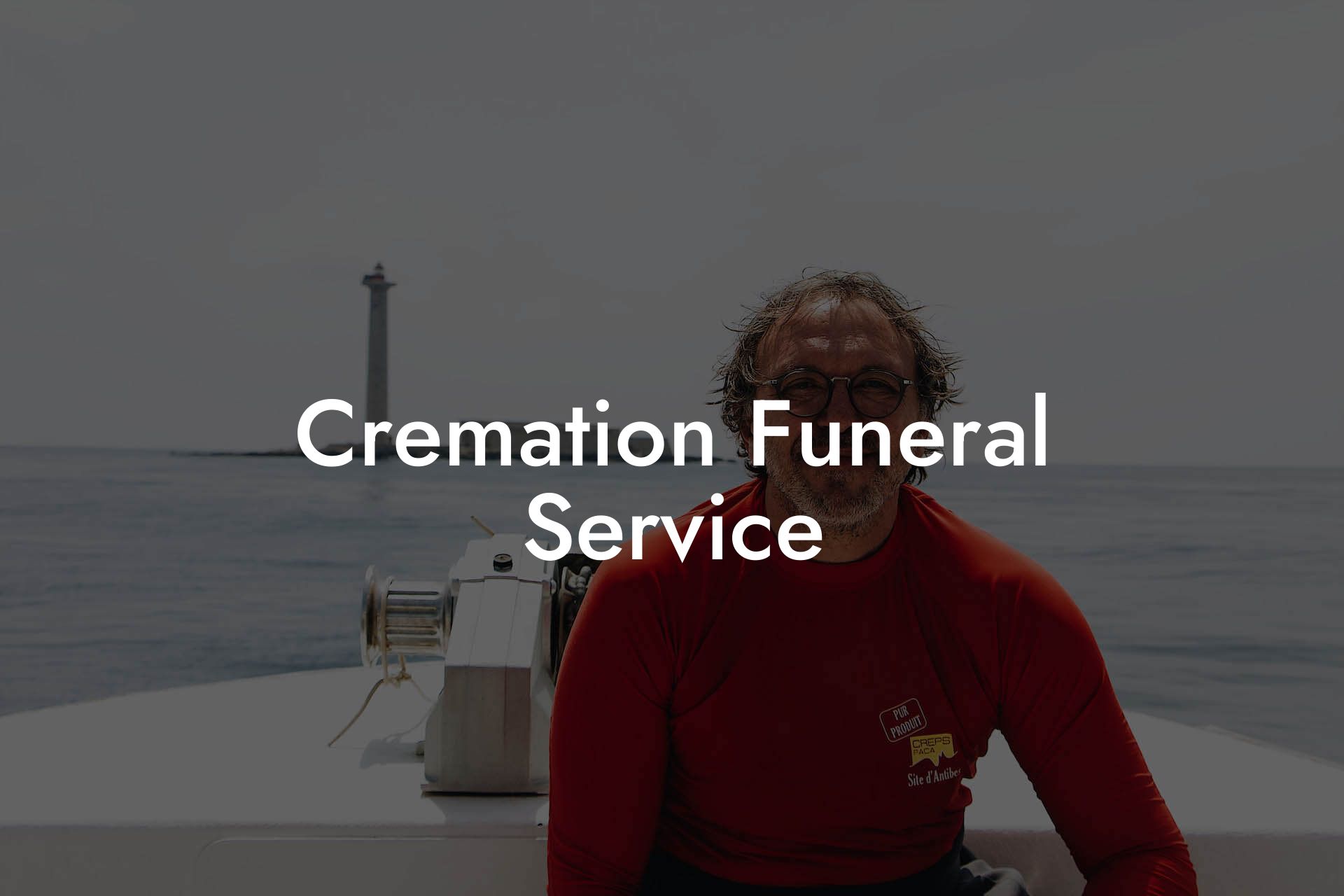Imagine a farewell ceremony that's as unique as your loved one's story, where memories are celebrated, and the environment is respected. Welcome to the world of cremation funeral service, a modern, eco-friendly, and personalized approach to saying goodbye.
Quick Links to Useful Sections
What is Cremation Funeral Service?
Cremation funeral service is a contemporary alternative to traditional burial, where the body is reduced to its basic elements through high-temperature burning. This process allows families to honor their loved ones in a way that's both environmentally conscious and cost-effective.
In simple terms, cremation is a flexible and adaptable funeral option that can be tailored to your needs, beliefs, and budget. It's an opportunity to break free from traditional funeral conventions and create a memorial service that truly reflects the personality and spirit of the deceased.
The Cremation Process: A Step-by-Step Guide
Understanding the cremation process can help you make informed decisions about your loved one's farewell ceremony. Here's a breakdown of the steps involved:
- Initial Preparation: The body is prepared for cremation, which may include washing, dressing, and cosmetic restoration.
- Container Selection: A cremation container or casket is chosen, which can range from a simple cardboard box to a decorative wooden casket.
- Cremation Chamber: The body is placed in a cremation chamber, where it's exposed to high temperatures (typically between 1400°C to 1800°C) for 1-2 hours.
- Processing: The remains are processed into a fine powder, known as cremated remains or ashes.
- Return of Ashes: The ashes are returned to the family in an urn or container, which can be chosen from a variety of materials and designs.
The entire cremation process typically takes 2-4 hours, depending on the type of cremation and the equipment used.
Cremation vs. Burial: Weighing the Options
When it comes to choosing between cremation and burial, there are several factors to consider. Here are some key differences to help you make an informed decision:
- Environmental Impact: Cremation is generally considered a more eco-friendly option, as it doesn't require land use, embalming fluids, or resources for grave maintenance.
- Cost: Cremation is often less expensive than traditional burial, with costs ranging from $1,000 to $3,000, depending on the services chosen.
- Flexibility: Cremation provides more flexibility in terms of memorial services, as the ashes can be scattered, buried, or kept in an urn.
- Personalization: Cremation allows for a more personalized farewell ceremony, as families can choose from various urns, containers, and memorial options.
Ultimately, the decision between cremation and burial comes down to personal preference, cultural traditions, and individual circumstances.
Cremation Memorialization: Honoring Your Loved One
Cremation memorialization is an essential part of the grieving process, as it provides a meaningful way to honor and remember your loved one. Here are some popular options:
- Urn Selection: Choose from a variety of urns, including biodegradable, wooden, metal, or ceramic options.
- Scattering: Scatter the ashes in a special location, such as a favorite park, beach, or mountain.
- Burial: Bury the ashes in a cemetery, memorial garden, or on private property.
- Tree Planting: Plant a tree or a memorial garden, symbolizing the cycle of life and the connection to nature.
- Memorial Services: Hold a memorial service, celebration of life, or funeral ceremony to honor your loved one.
These memorialization options can be combined, modified, or personalized to reflect the personality, interests, and values of the deceased.
Cremation FAQs: Your Questions Answered
Here are some frequently asked questions about cremation funeral service:
1. Is cremation a religiously accepted practice?
Yes, cremation is accepted by most religions, including Christianity, Judaism, Islam, Hinduism, and Buddhism.
2. Can I still have a funeral or memorial service with cremation?
Absolutely! Cremation can be combined with a funeral or memorial service, allowing you to pay your respects and celebrate the life of your loved one.
3. How do I know that the ashes are really my loved one's?
Crematories follow strict identification procedures to ensure that the ashes are accurately identified and returned to the family.
4. Can I scatter the ashes in a national park or public place?
Check with local authorities and park regulations before scattering ashes in a national park or public place. Some areas may have specific rules or restrictions.
5. Can I divide the ashes among family members?
Yes, it's possible to divide the ashes among family members, allowing each person to keep a portion of their loved one's remains.
Resources and Community Support: Your Next Steps
Losing a loved one can be a challenging and emotional experience. Here are some resources and community support options to help you navigate the grieving process:
- Grief Counseling: Seek professional counseling or therapy to cope with your emotions and adjust to your new reality.
- Support Groups: Join a support group, either online or in-person, to connect with others who have experienced a similar loss.
- Online Resources: Explore online resources, such as grief blogs, forums, and websites, to find comfort, guidance, and support.
- Funeral Homes and Crematories: Reach out to local funeral homes and crematories for guidance on the cremation process, memorialization options, and funeral planning.
Remember, grieving is a unique and individual experience. Be patient with yourself, and don't hesitate to seek help when you need it.

